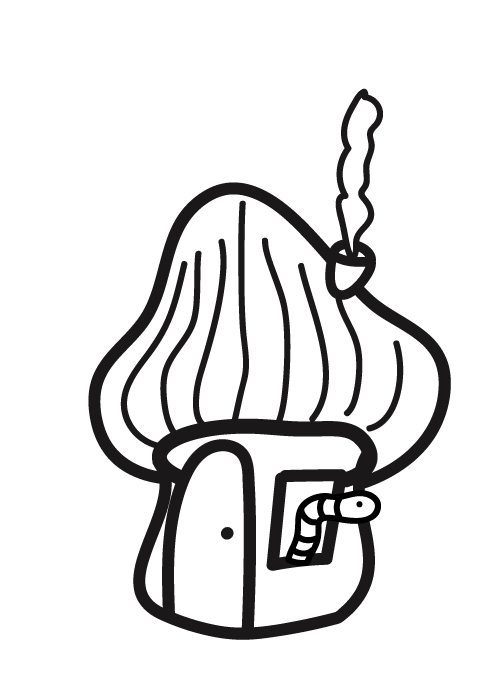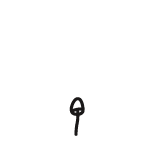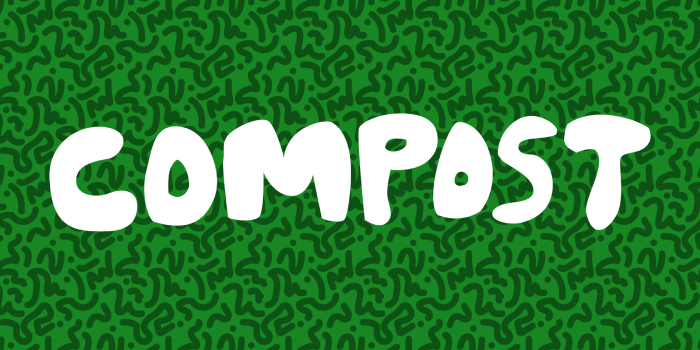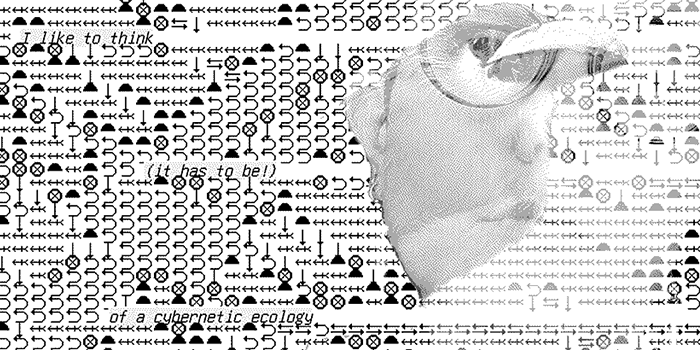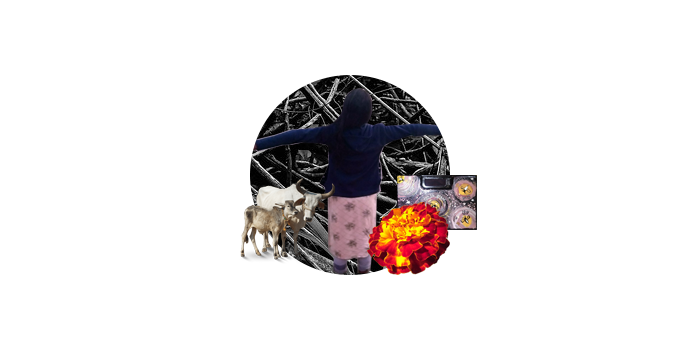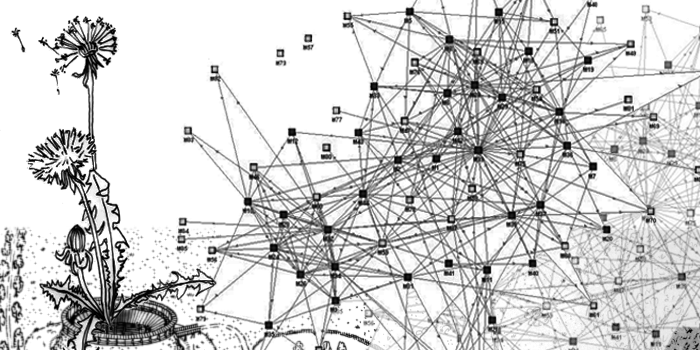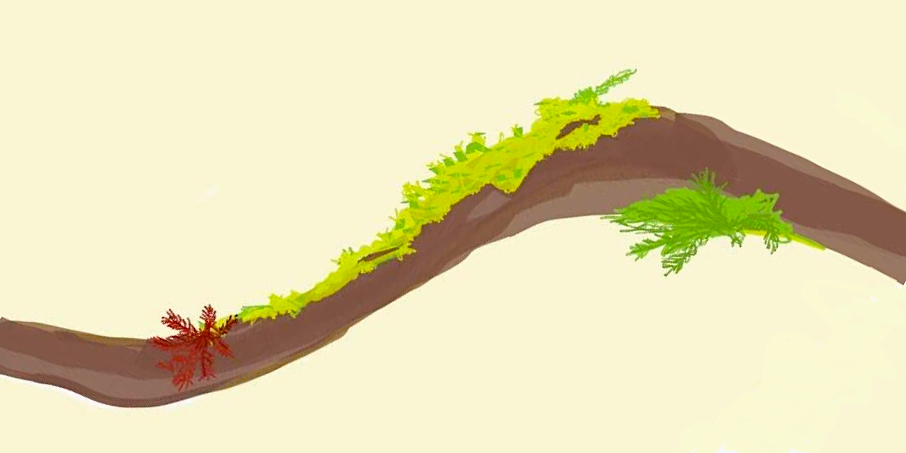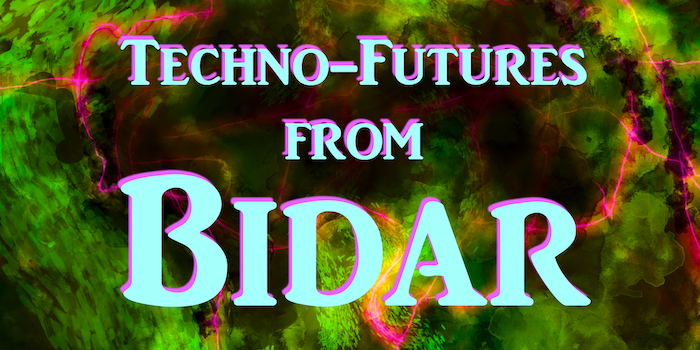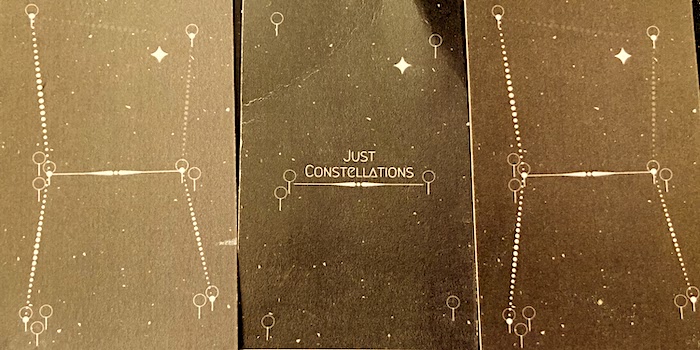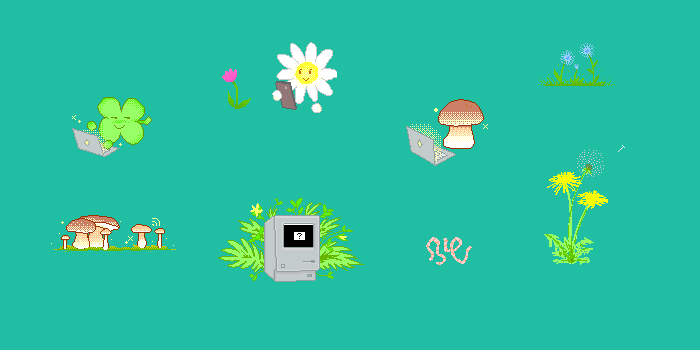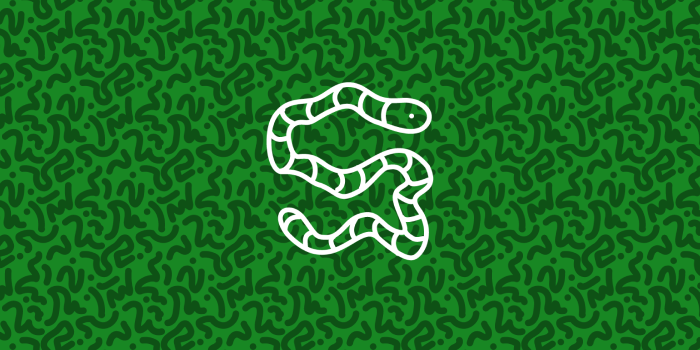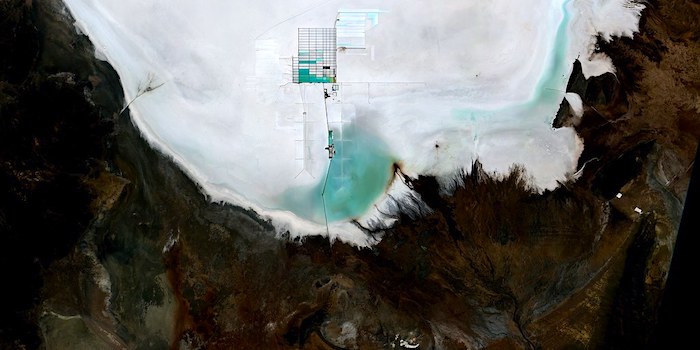
Image by Coordenação-Geral de Observação da Terra/INPE (CC BY-SA 2.0)
The Salt of the Cosmos
For Judy
For Rose
-
The Google image search for Salar de Uyuni is dazzling. The pictures are so white your eyes hurt. The spaciousness is almost terrifying. You can’t help but think that a place so full of emptiness must contain mirages: tricks of the light, secret delusions, passages to indeterminate places and unruly desires. The dried up lake looks like it could go on forever and ever. Everything here is in your head.
-
Lithium (Li) is the third element on the periodic table, sitting right behind hydrogen and helium. With an atomic mass of 6.941u, the soft silver-white metal is the lightest of all the alkalis and, under ordinary conditions, floats on the surface of water. Naturally-occurring lithium is impure; found in magmatic rocks and mineral springs, the highly reactive raw material must be extracted from the earth in order to become useful.
-
The first petalite, a transparent crystal made of lithium aluminium phyllosilicate, was discovered in the early 1800s on a Swedish island by Brazilian statesman and naturalist José Bonifácio de Andrada e Silva. Half a century later, the military surgeon and professor of Diseases of the Mind and Nervous System at Bellevue Hospital Medical College, William Hammond, became the first physician to prescribe lithium for psychiatric purposes.
By the early 20th century, the salt compound had made its way into the growing field of modern medicine: used as a hypnotic and an anticonvulsant as well as to treat abnormal levels of uric acid in the body. But early literature largely erased this history and, for over five decades, lithium was used mostly in craftwork and for machine grease. In 1949, at a veterans’ hospital in a Melbourne suburb, the Australian psychiatrist John Cade came to be credited with reintroducing lithium as a treatment for what was then known as “manic depression.”
Over a few isolated studies throughout the following years, the salt compound became the “gold standard” for treating manic episodes — what Cade referred to as “psychotic excitement” and Google today defines as “periods of great euphoria, delusions, and overactivity.” (An alternate definition reads, simply, “an obsession.”) In a tug-of-war between scientific observation and pharmaceutical marketing, the United States stalled on trading in treatments like electroconvulsive shock therapy for lithium carbonate. In the 1970s, with physicians already skirting federal approval to prescribe the salt, the U.S. became the 50th country to admit lithium into the marketplace.
-
The potential of the lithium electrode — a high working voltage that allows lithium-ion batteries to charge faster and last longer than those made from other elements — was first discovered in 1912 by American chemist, Gilbert Lewis. If lithium was initially an overlooked resource, the decades following World War II witnessed its increasing strategic importance: in a post-war landscape of massive tech developments and loose corporate regulations, lithium mining became one of the most rapidly expanding mineral industries.
China began producing the salt in the 1960s, when geologists first discovered high concentrations of it in evaporated lakes of western Tibet. In the 1970s, mining began in the “lithium triangle” — a region of the Andes which contains about 54% of the world’s reserves and spans from Bolivia’s Salar De Uyuni to Chile’s Salar de Atacama to Argentina’s Salar del Hombre Muerto and Salar de Olaroz. Today, lithium is bought by automakers to run electric cars, pharmaceutical companies to flatten manic episodes, and technology manufacturers to power computers and cell phones. With international corporations spending billions a year to extract the salt, and a market set to surpass $60 billion USD by 2024, investors await the big lithium boom — a surge in stocks as the “white gold” hits the peak of its business cycle.
-
What stories are hidden in a computer’s motherboard? What myths unravel when we break open our digital infrastructures? In the dried up lake, salt accumulates because there is no outlet to the sea. Caterpillar tractors cut horizontally through the salt crusts, carving out artificial pools of water where, over the course of several months or years, liquid from the brine evaporates. As you scroll through the images of the salt flats online, the pictures gesture towards industrialization: workers, machinery, processing plants, power lines. In some images, the salt pools into perfect hexagons. In others, the tiny crystals form mounds that remind you of the dirt piles next to construction sites off of freeway overpasses, or near the cul-de-sacs of new suburban neighborhoods.
-
In his theorizing of augmented reality, Nathan Jurgenson suggests that there is no “IRL”: the digital and the physical co-constitute each other, with the world away from keyboard (“AFK”) shaping digital infrastructures and online socializing informing our physical selves. The internet, in other words, is wrapped up in the ongoing affective crises of capital and empire. The genocide and destitution of the tactile is mirrored in digital life. The artist and cyber-healer, Tabita Rezaire, offers the term “e-colonialism” for the web’s reification of the legitimacy of the West. The physical structure of the internet, Rezaire argues, provides routes through which systems of surveillance, dependency, and extraction can be traced. First built as a U.S. military network, the internet’s foundational architecture — submarine fiber optic cables which transmit our digital data — is laid along former colonial trade routes.
-
The lost dreams of cyber-utopia flail in the salt flats. Charging quickly and dying slowly, lithium-ion batteries are bought and sold across international lines to make life more convenient. But “convenience” props up the West’s exportation of language, rituals, and sensibilities. If the internet is global, its reach is bound by its emergence from a particular way of knowing and relating. The hierarchies of knowledge inherited from a colonial world order — the American exceptionalism that continues to fuel the very notion of an imperial “core” — are built into our digital infrastructures. Put another way, computer power is just part of a geography and history of domination. The technologies that first promised connectivity and equality have proven themselves to be intrinsically racist, exclusionary, and militaristic.
-
Someone I meet on Twitter tells me that they think about diagnoses, and medication, as “tools to help interface with a world designed for abled folks.” Another tells me: “I think my diagnoses are ‘right’ to the extent that none of them are ‘wrong’.” In the fifth edition of the American Psychiatric Association’s Diagnostic and Statistical Manual of Mental Disorders (DSM-5), the chapter on bipolar sits between schizophrenia and depressive disorders — a discursive bridge between two supposedly opposite states. Further codifying bipolar’s swinging moods, the DSM divides the disorder into various subcategories: “depressive,” “hypomanic,” “manic,” and “with psychotic features.” In one swoop, the manual explains indeterminate experiences by their perceived severity.
-
“Stigma isn’t an attribute, it’s a relationship; one is normal against another person who is not,” writes scholar Saidiya Hartman. There is no rational without the bipolar; no stable without the borderline; no real without the psychotic. As the poet Fred Moten generously offers, no thingliness without nothingness; no nothingness without blackness; no order without disorder. To be brought into being — to have a singular self that emotes uniformly, empathizes properly, and proves its humanity neatly — is to position yourself against the Other; to understand your being in opposition to those who you find illegible. Nothing can exist without something else.
-
The ancestral land in the lithium triangle no longer has clean water. Atacameñxs witness pollution, ruined soil, and air contamination first hand. Some, already fighting water shortages and privatization, are paid cash sums for land rights where international plants are based. Others who work in the mines report irritable respiratory tracts and risk pulmonary edema if they breathe in too deeply. Patients prescribed lithium are monitored for toxicity, as high levels of the salt in the bloodstream can result in vomiting, tremors, seizures, blurred speech, and death. Still, lithium batteries, stuffed with cobalt, have successfully been marketed as “green.”
-
It’s difficult to write about the moods that lithium treats because diagnoses obscure actual emotional experiences. The DSM is a book of labels but, as the theorist and curator Legacy Russell reminds, “symbols are very, very real.” However soft they may be, the social sciences assemble the frameworks that determine how we relate to each other and understand ourselves. Psychiatry has saved lives — perhaps yours, and perhaps mine; the DSM, too, arises out of the very conditions that make us sick. What is sane when shaped by power and use? The study of the mind — of the individual human — is an assertion of what is good and true; the DSM’s ever-expanding list of disorders an attempt at cataloguing capacity in an economy run on functionality.
-
A friend tells me that they seek out the internet when they’re “not feeling OK” — that digital space allows them to feel cared for when they have nowhere else to go. They add: “but when I am feeling the most depersonalized — grasping for pieces of a self that I don’t know exist — the internet can feel extremely scary and expansive.” If you’ve discarded the idea of a core self, if you flit between unrealities, the observation of a digital platform becomes too much.
-
Mania has been described to me as the most severe form of depression: an affective surplus so intense that it must end in combustion. Too much energy, too much desire, too much sensation, too much connection, too much capacity. So much, actually, that your “I” disappears.
The cache of pictures of the salt mines on my computer feels like an archive of the oblivion that holds me together — a state of what Johanna Hedva calls a “de-person” and which some Buddhists might refer to as Anattā. I wonder what the expansiveness of the salt flats holds. Does the abyss speak back? Does nothingness have an answer? I have the same question for digital space, and for the batteries that power it. When there is no outside, when digitality bleeds into the material and the material shapes the digital; all of it is precarious and unlivable, crumbling as I write. The only possibility left is to recover what is fertile in painful ruins.
Of course digital space is a trap. It surveills, flattens, and hollows out our complex selves; it degrades sociality. But it’s no more of a trap than the legacy it grows out of. Too much of what? Expansiveness is horrifying, I think, because too much exists against all of our “healthier” impulses: a nowhere to give in to multiplicity, to avoid blowing up.
-
All of my beautiful, insane friends convene on the internet. Crowdfunding pays medical bills that the state ignores. Reddit threads circulate wisdom discarded by the authority of “expertise.” Anonymous chat rooms provide care for those dismissed by eurocentric medical research. If for a fleeting moment, the expansiveness of the digital commons opens up new possibilities for those scrutinized as deviant, disordered, and pathological. Together, we dance between identities without having to get out of bed, socialize without having to summon language, and enter into community without the risk of physical violence.
The mad refuse the myth of the utopic internet (the very nature of insanity refuses the myth of utopic anything). But, in its transformation of what we understand to be both acceptable sociality and legitimate governance, augmented reality itself is a reconstitution of what is possible and knowable — material and digital proof that we can call into existence new ways of being. Wandering through lithium-powered spaces is a flirtation with the possibility of escaping the tidy capture of a regime intent on determining normality and value. In the cyber-shadows, we refuse psychiatry’s program of order: existing in multiple places at once, replicating our no-selves, and mutating into new forms.
-
In July of 2020, CEO of electric vehicle manufacturer Tesla and aerospace company SpaceX, Elon Musk, admitted to involvement in the U.S.-backed coup of Bolivia the previous year. In November of 2020, the country’s first Indigenous president, Evo Morales, read to a crowd Musk’s tweets, which exclaimed: “We will coup whoever we want! Deal with it!” The Socialist, Luis Arce, had recently won the 2020 general election. Morales had just returned home out of the exile imposed on him by the right-wing interim government — what he referred to as the “lithium coup.” “Go online to verify it right now,” Morales told the crowd.
-
mine(noun): an excavation in the earth for extracting coal or other minerals
(WE WILL COUP WHOEVER WE WANT!)
mine(pronoun): a thing that belongs to me
(DEAL WITH IT!)
Mine as in the entitlement of self, the ownership embedded in personhood.
-
The times that I have known most deeply what is true and beautiful and important — when I understand how all of the little things are connected to the overwhelmingness of being — have been the times in which I forget the demands of a self. When I move between affects; when I’m flying between futures and pasts. Often, when I can’t speak; or when I speak too much. These are also the times that I am the least legible. A friend advises: “You have to stay grounded in this world, while knowing that the world that you saw exists. You have to choose what realm you want to play in and, if you choose the reality of your deep consciousness, of your hallucination, you will face consequences.” If you choose multiplicity, you will face consequences.
-
To talk about the consequences of medicalization is to untangle the story of what it means to be human, and to untangle the story of what it means to be human is to confront the colonization of knowledge. The history of the manual is a history of calamity: the Enlightenment’s insistence on rationality and scientific progress, European philosophy’s suspicion of the senses as sites of authoritative knowledge, liberal democracy’s turn to the white man as the basis for a universal human. “I think, therefore I am,” someone once uttered, lighting a match.
The entanglements of order and disorder rely on the regulation of humanness. And the regulation of humanness — the hierarchies of knowledge that emerged alongside values like “rational” and “reasonable” — are reinscribed through the consecration of “wellness” and “care.” Self-mastery contours capitalism’s demands of productivity. Self-control maintains the austerity of neoliberalism. The very notion of a “healthy” self emerges from the universalism that seeks to classify the unknown. We are, like lithium, useful material — to be extracted, filtered, separated, and re-formed.
-
How do you treat an illness that is produced by the degradation of humanness, and which itself reproduces a certain set of subhumans? How do you treat a disorder that emerges out of the state’s incarcerating, biologizing, and classifying?
In August of 2019, the Bargersville Indiana police department put a Tesla Model 3 patrol car on the streets. A few months later, police in Westport, Connecticut paid $52,290 to include one of the same lithium-powered vehicles in their automotive fleet. As activists call for a full-government mobilization to respond to the climate crisis and abolitionists call for an end to systems of imprisonment and policing, cops are turning to the “clean air” vehicles as a “cost-saving” measure. Blue is backing green; and Musk is backing Blue.
-
I have no doubt that the hallucinations of psychosis are proof of ways of being beyond the liberal democratic human. The destabilizing experience of ever-shifting moods is evidence that the “self” is neither singular nor fixed. The expansive nothingness of dissociation — the inability to speak, the refusal to function — an assertion of those beautiful socialites that persist in the face of extinction. I’m not here to romanticize this but, if “stable” emerges out of the conditions which produce its opposite and “sanity” is a stand-in for being brought into subjecthood, then for most of us “I” will never materialize.
There is no treatment for a subject-position that relies on everything that it is not; no “wellness” to be found in manuals that produce the self in relation to the Other. Medicalization, I think, splits open the promise of the “we.” Ushering in a ward of “I’s,” the DSM eradicates the potential of existing in intimate relationships with ourselves, or the world around. In this sense, medicalization makes possible not only the pathology of bipolar but also the extraction of lithium to begin with.
-
I’m worried that I’m theorizing about experiences which are meant to be left untouched. Anthropology, the instinct to uncover, dissect, and pedestal the mystical, is a colonial invention after all. The West has nothing to say. No moral authority or historical accuracy about what ought to be preserved. The task now is to undo the basis of what we agree constitutes truth, value, and self.
-
Tabita Rezaire’s practice draws on the decolonial tools which arise out of colonial institutions. Blending virtual technologies and traditional African “cosmological knowledge,” Rezaire turns towards her “inner data” in order to “bypass western authority and download directly from source.” Technologies, Rezaire insists, are all of the networks available to us: electronic, organic, and spiritual. How do you acknowledge the truths of your being when you sever life from the technologies that nourish it? Why care for the land, the water, the sky, the salt, when your personhood is extricated from history, space, and place?
Feeling is a historical narrative and a raw material; the most ordinary of online experiences are entangled with the domains of catastrophe and collapse. The constriction of the DSM, the drudgery of the Tesla factory, the surveillance of social media — all infrastructure grows out of the colonial pathways that power digital life. But Rezaire suggests that new technologies are rich ground for reconnecting to the expanse of the cosmos: passages to decipher interlaced systems of domination and then “peel off the layers of this coercive history.” In tying Indigenous knowledges and digital technologies, Rezaire proposes, we can recover from the “manufactured amnesia” of the Enlightenment. The blending of the past and the future — the physical and the cyber — is a process of healing from the state’s on-going project of hierarchizing life. In the violence of the digital, which is to say the violence of the everyday, there is the possibility of transformation.
-
mine(verb): to obtain units of a cryptocurrency by running a computer process to solve specific computational problems
(In November of 2017, online magazine The New Inquiry released Bail Bloc — a mining software that generates secure and untraceable cryptocurrency and then redirects that exchanged money to bail funds on a rotational basis.)
Mine as in a cryptocurrency scheme against ownership. Mine as in the possibility of a decentralized future invested in non-carceral care.
-
What is the reality of the existence of those who remain grounded in the physical world while knowing that other sensations, textures, and feelings exist?
A friend describes mania to me as “like getting Google downloads into my brain for hours.” A tumblr made in one of their bouts becomes a “private portal service”: a digital collection of what they describe as a “gift” — their tapping into a level of flow so beautiful that they are able to “interpret things often obscured by the status quo.” I think about the task of speaking in a language that the present does not even recognize. The indeterminacy housed in nothingness; those non-linguistic realms in which our airy, unyielding selves reside. I think of the Zoom support groups from which the best poetry emerges; the corners of the internet that double as an archive of the cracks between diagnostic categories.
My friend tells me about the unprocessed trauma, the conflict with beloveds, the debilitating paranoia. They say: “the way I am being perceived is so wrong. The disconnect between my being and mind makes my behavior come out in ways that do not make sense to those perceiving it.” I ask a mad friend if they want children, and they respond, “No, I don’t want to pass this on.” I wonder about the ungovernability that allows for shifting moods. Those wild, unruly ways of being that have no interest in fighting to be included in the category of the sane. I think about the expansiveness of the salt flats: the promise of openness, connection, and renewal. The nowhereness of digital space: the ephemerality in which mad communities might comfortably exist with multiple/no-selves.
-
How do you feel a full feeling? I imagine: by touching the salt with your toes, sobbing at the furthest reaches of the expanse. I imagine: by letting yourself replicate throughout digital space, stretching out in opacity, emerging at the end of the narrative. When I’m moving between emotional worlds, feeling too much, I repeat to myself, over and over and over, moods make room for the expanse, and then the expanse makes room for moods. In nothingness, it is not a threat if “I” never materializes — or if, when it does, it shines in and out of focus, a trick of the light, something only in our heads and never felt in our flesh. Excess, crisis, and collapse: all breakage is a lesson in renewal. “I” write from a place that believes undoing the human will allow for more mutual social relations. Writing from a place that believes, when the self ceases to exist, our digital infrastructures will bloom out of a respectful entanglement of culture and nature. A place that understands the web as a creative un-doing and an anti-epistemology: an expanse in which the insane can safely exist as too much.

Tal is founding editor of ATM, an online magazine publishing at the intersections of criticism, art, and community organizing. Their writing has appeared in The Nation, Bookforum, Autre, and elsewhere.




